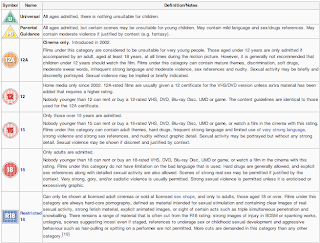(Molly Hetherington)
As a continuation into our research we decided to look at woman in black. We like the storyline and how you was introduced to the film straight away, immediately drawing the audiences attention this is because it uses small children playing focussing in on their vulnerability. The film is a thriller movie although it does contain elements of horror which we want to try and replicate as a group and use in my title sequence to add mystery and confusion with the use of editing. The editing gives the audience a disorientating feel with the credits shown against a smokey background showing that something bad has happened which is out of the ordinary.
Enigma is constantly being created, as an audience we wonder why the children stop playing and who it is that they are looking at. What makes them jump?
The lighting at the beginning of the clip is very natural, linking into the children's personality. This could suggest that they are young and that their future is bright.
The sounds is this scene tell us a lot about the film and the possible dangers ahead, immediately making the audience awear of the horror genre. We are first aware of a noise which is similar to what you would hear from a toy box calming and very child like however it starts to build tension as we can not see the whole pictire. The noise of the china tea pot also has a reference towards a clock, ticking suggesting that time is running out. The child like music contrasts to the image seen making the audience feel un easy and building tension. This has an immediate effect due to the music being non digetic.
The use of the shots also helps to play on the audiences mind, showing both close up of the dolls, hands and individual faces as well as the surrounding area of the bedroom. The music helps to build on this tension almost slowing down. The music begins to fade and copy the sound of wind, suggesting that there is a new presence, something has changed. The zooming in of the camera when at the window emphasis them suggesting that this is the danger and the next move for the girls. Everything appears to be in slow motion emphasising the danger and building the tension. A close up of the feet suggest that maybe they aren't in control this is further explored as the go on to walk over the dolls and tea cups, this isn't in there nature something or someone has made them do this we know this because the girls were playing with them seconds before. The use of the broken props suggest that them girls have gone now their personality has changed. As the music dies down the audience may start to relax however this isn't for long as they are suddenly caught off guard by the next collection of noises, helping to scare and frighten the audience more while they are slightly off guard.
The long shot of the girls standing on the window is uneasy the audience want to scream at them telling them to get away. The close up of the hand emphasis how young the girls are and they danger that is approaching them. As the handle is fully realised and the window starts to open the music almost makes us jump. Telling us of the danger. I think the sounds used have worked very well here as they are great at building tension. The dies down to an almost stop as the girls come out of frame suggesting that the girls have died and the presence has now dissapeared. The camera zooms out from the window helping to make the audience reflect on what they have just seen, the cries of scream coming from down below help to make the audience come back to reality. The close up of the doll again emphasis their age. The audience are then shown the opening titles, black font against a cloudy background.The cloudy background helps to connotate the confusion and the reality of what has just happened. The black text is the danger, standing out from the clouds and suggesting that the danger isn't over, it is just the beginning.
The clothing of the girls was very pale showing their age and particularly their vulnerability. In the 1:50 that we watched we have learnt and seen a lot, already showing us the horror genre and building suspense as to what we are going to see next.

























